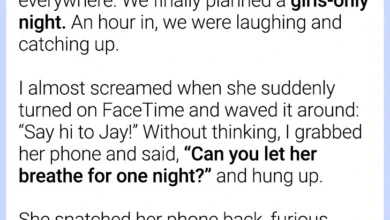The Last Password

For ten years, Lena and Ava built everything together—starting in a cramped college dorm room with nothing but a laptop and a dream. Now, their cybersecurity startup CipherNest was worth over $50 million. Investors were lining up. The media dubbed them “The Shield Sisters.” But Lena didn’t care about the headlines. She cared about loyalty—and Ava had been her sister in everything but blood.
So when the warning email came through their encrypted alert system, Lena’s heart stopped:
Unauthorized login detected. IP traced to Berlin. Administrator access used.
Only two people had that level of access: her and Ava.
She rushed to the server logs. Files had been cloned—entire client dossiers, including confidential breach reports and unreleased encryption algorithms. The IP wasn’t just any location in Berlin. It was a secure office rented by CipherGuard, one of their biggest competitors.
She called Ava. No answer.
The next morning, Ava resigned. No warning. Just a typed letter in Lena’s inbox:
“I’ve done what I had to. Don’t look for me.”
Within a week, Ava was named Chief Technology Officer at CipherGuard. Their CEO boasted in press releases about their “breakthrough innovations” that looked suspiciously like CipherNest’s work.
Betrayal wasn’t even the right word. Lena felt erased.
The board panicked. Investors threatened to pull out. Lena’s team was bleeding talent—some lured away by Ava, others demoralized by the breach of trust. The FBI launched an investigation, but digital trails were wiped clean. It was her word against Ava’s, and Ava had vanished into the world of NDAs and corporate silence.
But Lena had one card left. Something even Ava didn’t know.
When they were coding their first system together, Lena had embedded a backdoor. Not malicious—just a failsafe. A way in. It was buried beneath layers of protocol, cloaked as an error handler. Lena hadn’t used it in years.
Until now.
She logged in late at night from her home server. The new CipherGuard encryption suite—Ava’s “signature” launch—was live on their dev site. Lena ran a checksum comparison against their original build.
92.6% identical.
She opened the internal dashboard.
Then she paused.
There was a note. A line of code, tucked away in a comment:
// I knew you'd come looking. Don’t do this, Lena.
Lena stared at it.
Ava knew.
She scrolled further. At the bottom of the architecture file, another message:
// You taught me to be careful. But you also taught me not to be afraid.
Lena could have triggered the kill switch. Wiped the code. Broken their system. Exposed Ava to a career-ending lawsuit. But instead, she closed the terminal.
She crafted an anonymous leak. Enough to tip regulators and investors. Ava’s launch was halted. CipherGuard’s stock dipped. Their CEO “resigned for personal reasons.”
But Lena never pressed charges.
Two years later, she received a postcard from Morocco. No return address. Just a handwritten line:
You’re still the best code I ever wrote. – A




